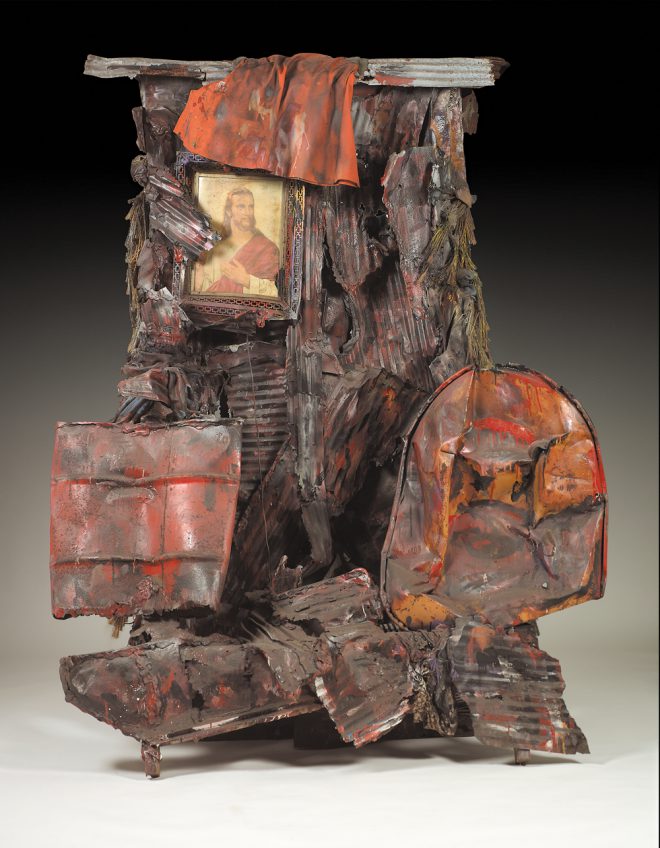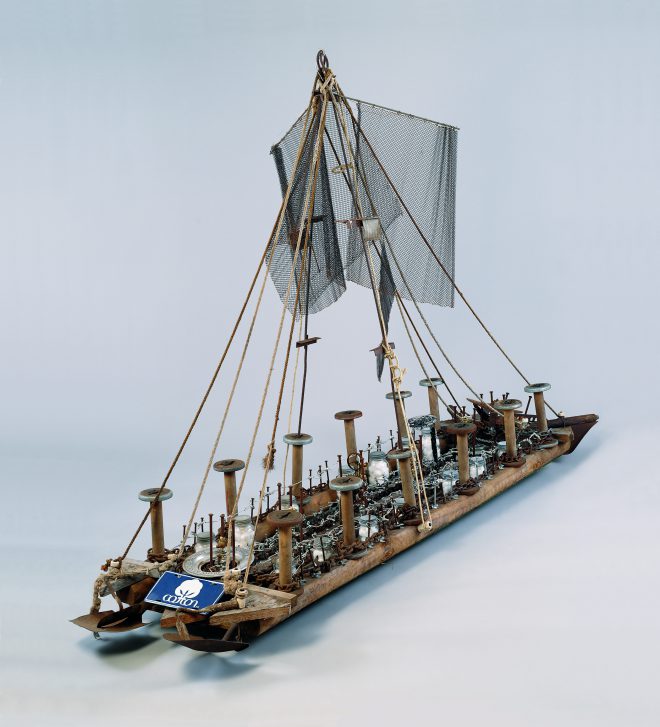Outside In: NOMA Acquires Ten Works from the Souls Grown Deep Foundation
Benjamin Morris writes about ten works that the New Orleans Museum of Art recently acquired from the Souls Grown Deep Foundation.

Thornton Dial, Shack Town, 2000. Courtesy the estate of Thornton Dial and the New Orleans Museum of Art. Photo by Stephen Pitkin.
This summer, the New Orleans Museum of Art announced a major addition to its collection: ten works from the Atlanta-based Souls Grown Deep Foundation. The news may have arrived rather quietly, without a major exhibition or display, but locals have much to look forward to, as this acquisition includes works by a range of celebrated artists such as Thornton Dial, Ronald Lockett, and Mary Proctor.
Formally incorporated in 2010 around the core of an extensive private collection, Souls Grown Deep has long championed the works of contemporary African-American artists from the South who are self-taught or whose work has been termed “folk” or “outsider.” Boasting over 1200 works in its archive, the foundation partners with institutions across the United States to showcase and exhibit them. “Hard Truths: The Art of Thornton Dial” that toured NOMA in 2012 was one such show—but only in the last few years has the foundation moved to place those works in different museums on a permanent basis. According to curator Katie Pfohl, NOMA’s strength in self-taught and outsider art, featuring over 400 works from artists from around the country, sparked a dialogue with the foundation earlier this year.
The acquisition is structured as a gift-purchase, whereby the foundation invited select museums to peruse its entire collections and solicit specific pieces for purchase. Offering rationales for each selection—in this case, seeking to acquire works by artists not already included in its collection and works that would enter into direct dialogue with other contemporary artists—NOMA made its case, and after a period of negotiation the two organizations agreed on these ten.

Joe Minter, Slave Ship, 1995. Courtesy the artist and the New Orleans Museum of Art. Photo by Stephen Pitkin.
The works in the acquisition include a variety of media, including textiles, mixed-media assemblages, and found-object sculptures. Among them are five quilts by the quilters of Gee’s Bend in Alabama, greatly bolstering the museum’s current collection of contemporary American textiles. Also of note is Joe Minter’s Slave Ship, 1995, a six-foot-long installation depicting a meticulously designed and vividly imagined slave-bearing vessel, arresting the eye and commanding the space in which it sits. Following a period of conservation review and assessment—some of the materials, such as the irregular tin sheets in Dial’s Shack Town, 2000, are easily disordered in transit—the works will gradually begin to appear in the museum in the coming months.
Recognizing the difficulty of terms such as “folk” or “outsider,” Pfohl notes that initial plans for the works include showing them in the existing galleries of Modern art, rather than further quarantining them under such restrictive labels. In 2018, however, with the opening of the museum’s new contemporary gallery, they will receive more focused attention. Beyond that, Pfohl says, she hopes to see future collaborations with the foundation in research or curation, but for now the priority is on their safe arrival. And such a gift is beyond welcome. As New Orleans continually grapples with its past, and questions of identity, monumentality, and history continue to dominate public debate, more contributions from the arts exploring these concerns—such as Minter’s powerful installation—simply cannot come soon enough.



